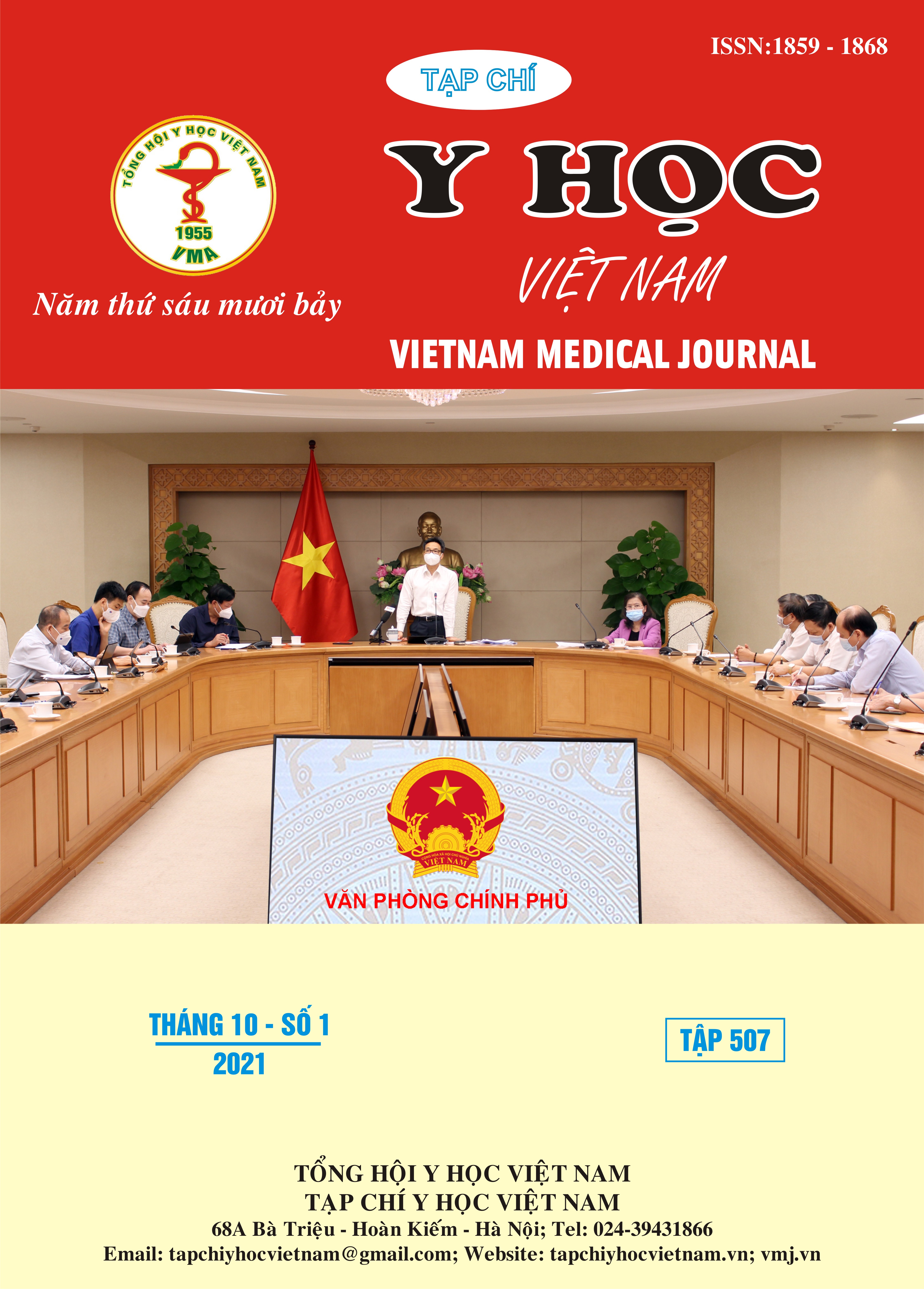DIAGNOSIS OF THE WHITE COAT EFFECT BY 30-MINUTE OFFICE BLOOD PRESSURE MONITORING (OBP30)
Main Article Content
Abstract
Patients who came to the examination rooms of the Out-Patient Examination Department of Nhat Tan hospital with hypertension that the doctor thought about the white coat effect during 8 months from October 1, 2020 to May 31, 2021. The number of patients with OBP30 measured was 163 including records with at least 8 readings. Methods: Cohort. Blood Pressure Monitoring device was Norav, NBP-24 NG. Results: A total of 163 patients were recorded with full OBP30, of which 93 were female, accounting for 57%. Age 14 to 86. Mean age was 48.7 ± 14.5. When measuring OBP and someone showing signs of hypertension, the doctor thought that 107 people should be treated (65.6%). After getting the results of OBP30, the doctor only prescribed antihypertensive treatment for 74 people (45.4%), reduced 33 people, and the rate of reduction in hypertension treatment was 20.2%. Conclusion: Our study shows that OPB30 reduces the effect of White Coat Effect about 20.2% of cases with identified office hypertension. Thereby, treating hypertensive patients and monitoring White Coat Effect patients will be more effective as well as reducing costs and side effects for them.
Article Details
Keywords
Hypertension, Office Blood Pressure (OBP), 30-MinuteOBP Monitoring (OBP30), White coat effect, Nhat Tan hospital
References
2. Williams B, Mancia G, Spiering W, Rosei EA, Azizi M, Burnier M, Clement DL, Coca AC et al. 2018 ESC/ESH Guidelines for the management of arterial hypertension: The Task Force for the management of arterial hypertension of the European Society of Cardiology (ESC) and the European Society of Hypertension (ESH). European Heart Journal, Volume 39, Issue 33, 01 September 2018, 3021–3104
3. de Paz LG, Kostov B, Alvira-Balada MC, Colungo C, García N, Roura S, Blat E, Sierra-Benito C, Sotoca-Momblona JM, Benavent-Areu J, Eva Sánchez E, Sisó-Almirall A, Eva Sanchez E. Effectiveness of a new one-hour blood pressure monitoring method to diagnose hypertension: a diagnostic accuracy clinical trial protocol. BMJ Open 2019;9:e029268.
4. Mas-Heredia M, Molés-Moliner E, González-de Paz L, et al. Validity and applicability of a new recording method for hypertension. Rev Esp Cardiol 2014;67:717–23.
5. Wel MC van der, Buunk IE, Weel C van, Thien TABM, Bakx JC. A Novel Approach to Offi ce Blood Pressure Measurement: 30-Minute Office Blood Pressure vs Daytime Ambulatory Blood. Annals of Family Medicine, Vol. 9, No. 2. March/ April 2011.
6. Haan NS-de, Wel M van der, Schoenmakers G, Boudewijns S, Peer P, Weel Cv, Thien T, Bakx C. Thirty-minute compared to standardised office blood pressure measurement in general practice.British Journal of GeneralPractice, September 2011: e590-e597.
7. Bos MJ, Buis S. Thirty-Minute Office Blood Pressure Monitoring in Primary Care. Annals of Family Medicine. Vol. 15, No. 2. March/April 2017.


